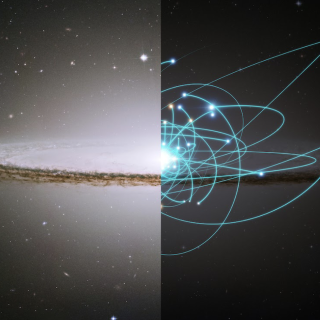This study, carried out by IAC researcher Juan Antonio Belmonte, was published recently in Archaeoastronomy, the annual supllement of the Journal for the History of Astronomy.
Image sequence in betcam format available by phoning:
922 605202 or 922 605371
The exactitude of the alignment of the Egyptian pyramids with the four cardinal points continues to be an interesting topic that harks back to one of the first moments in the history of civilization in which astronomy was pressed into the service of the arts, in this case to monumental architecture. From the XIX century onwards many investigators have sought to explain the supposed Egyptian mastery of astronomical principles by postulating various theories. Recently, the journal Nature gave front page coverage of a new idea proposed by the British Egyptologist Kate Spence, according to whom the alignment of the pyramids could have been achieved via observations of simultaneous transits across the local meridian (an imaginary semicircle that divides the sky into its eastern and western halves) of two circumpolar stars, Kochab and Mizar, that were on opposite sides of the north celestial pole at the time when the pyramids were built, the chronology of the Great Pyramid being thereby shortened by almost 80 years. The article by the IAC's Juan Antonio Belmonte now critically examines Spence's proposal and improves on this with a new hypothesis.
As is well known, the pyramids of Egypt, particularly those of the IV Dynasty Kings Cheops, Khephren and Mycerinus, raised on the plateau of Giza some 4500 years ago, are orientated with extraordinary accuracy with the four cardinal points. Belmonte now suggests that this orientation, following the local meridian, could have been achieved through meridian transit observations of the stars Phecda and Megrez, belonging to the Leg of the Bull, one of the most imporatant Egyptian constellation (equivalent to our Plough in the constellation Ursa Major). Extending the line joining these two stars leads us to Thuban (the "pole star" at that time) in the same way that the two stars Merak and Dubhe today act as pointers to the present Pole Star,
Polaris.
According to this new hypothesis, the greatest accuracy of alignment would have been achieved around the year 2562 BC; consequently, the Great Pyramid could have been orientated close to this date, at a moment falling between the two dates proposed Spence and Belmonte, which would place it at the start of the reign of Cheops (2589 - 2551 BC) and render unnecessary the shortening in the chronology advocated by Spence.
Belmonte's hypothesis has important chronological and historical - even mythological - implications that could help towards a a better understanding of how the Egyptians of the pharaonic era understood the cosmos and made use of it, among other things, to align precisely their most important monuments.
Complete text of article also published in issue 1-2001 of IAC Noticias (only in spanish), at:
http://www.iac.es/gabinete/iacnoticias/1-2001/17.pdf


